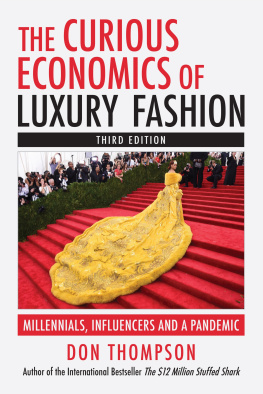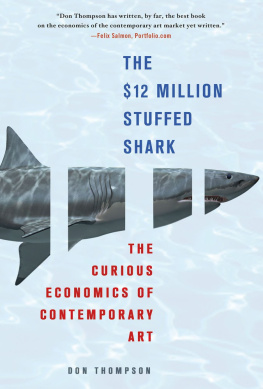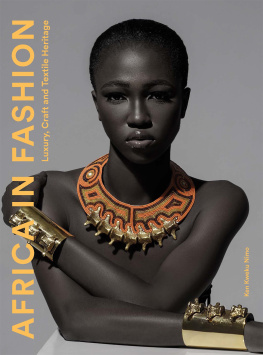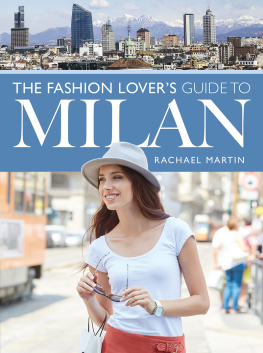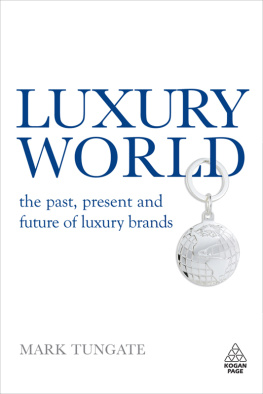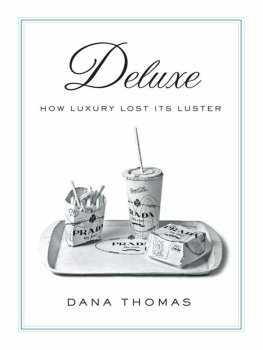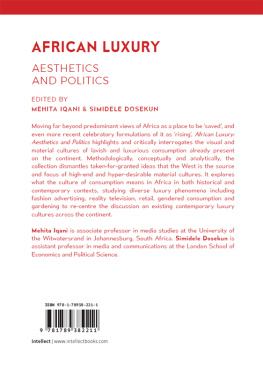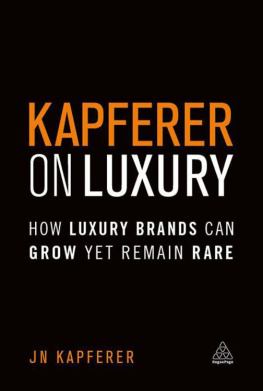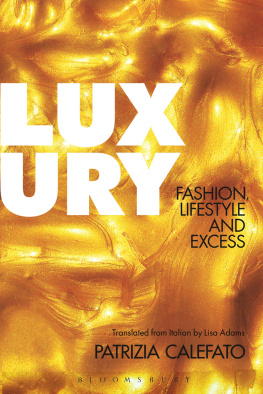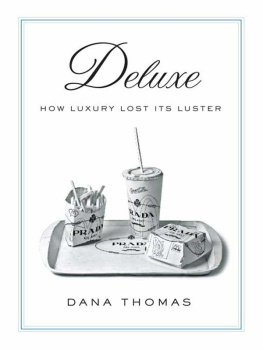THE CURIOUS ECONOMICS OF LUXURY FASHION
Millennials, Influencers and a Pandemic
Third Edition
Don Thompson
Author of the International Bestseller The $12 Million Stuffed Shark
Cover photo: Robyn Rihanna Fenty arriving at the 2015 Metropolitan Museum of Art's Costume Institute Gala benefit. Credit: TIMOTHY A. CLARY/AFP via Getty Images.
Copyright 2021 by Donald N. Thompson. No part of this book may be reproduced by copying, scanning or uploading without permission except for brief quotations for critical articles or for review purposes.
Cover design and layout by Tami Boyce. First edition: March 2021. Second revised edition: July 2021, third revised edition March 2022.
Library of Congress CatalogingIn-Publication Data, The Curious Economics of Luxury Fashion: Millennials, Influencers and a Pandemic
Don Thompson, author
Includes bibliographical references.
ISBN softcover 978-1-7775632-0-2; hardcover 978-1-7775632-1-9; electronic book 978-1-7775632-3-3
Printed in the United States of America. 1. Luxury fashion. 2. Fashion, 3. Fashion economics
Don Thompson
D on Thompson is an economist and emeritus Nabisco Brands Professor of marketing and strategy at the Schulich School of Business at York University in Toronto.
He has an MBA and PhD from the University of California, Berkeley, and has taught at Harvard and the London School of Economics.
The Curious Economics of Luxury Fashion is about the fascinating world of luxury fashion, under forced change from the dual pressures of millennials and the Covic-19 pandemic. It draws on interviews from Milan, Rome, London, New York, Shanghai and Toronto.
Thompson is the author of twelve books, most recently three on the art market: The $12 Million Stuffed Shark: The Curious Economics of Contemporary Art (2008); The Supermarket and the Brillo Box: Back Stories and Peculiar Economics from the World of Contemporary Art (2014); a nd The Orange Balloon Dog: Bubbles, Turmoil and Avarice in the Contemporary Art Market (2016).
He has written for publications as diverse as The Times (London), Harpers Art , Fortune and Apollo .
PRAISE FOR DON THOMPSONS PREVIOUS BOOKS
If you read no other book about art in your life, read the one thats gripped me like a thriller for the past two days.
Richard Morrison, Chief Culture Writer, The Times (London)
Lucid, well researched, and, while carefully balanced, manages to retain a sharp edge.
John Preston, The Telegraph (London)
Ought to be required reading for collectors intending to wade into well-publicized contemporary art auctions.
The Economist
Bringing an economists curiosity to the inner workings of the contemporary art market, Don Thompson manages once again to explain, in laymens terms, how a lot of it works.
Sarah Douglas, Culture Editor, The New York Observer
I started reading The Supermodel and the Brillo Box and could not put it down until I finished it.
Pilar Ordovas, former Deputy Chairman, Christies Europe
LUXURY FASHION
THE CURIOUS WORLD OF LUXURY FASHION
What you wear is how you present yourself to the world, especially today, when human contacts are so quick.
Miuccia Prada, fashion designer
Millennials want brands with a story, something they can relate to.
They want a personal brand they can put a face to.
Bobby Berk, American actor
T he marketing of luxury fashion has long fascinated me. I am an economist who has taught marketing and strategy to MBA students. I have consulted in a luxury industry. Yet much that I saw in the world of luxury fashion remained opaque. There were the obvious questions. Why does one handbag sells for five-times the price of another that looks and feels pretty much the same? How does a luxury label justify a runway show costing many millions of dollars, when most of the outfits paraded will never appear in boutiques? Why do fall fashions shows appear on the runway in March, and spring fashions in November?
The luxury fashion world is experiencing wrenching change, buffeted by the clash of its traditions with the realities of the now-majority millennial and Gen-Z culture, with Facebook influencers more important than Vogue ads, and with the 2020-22 shutdowns and changes forced by the coronavirus pandemic. Prior to 2020, that fashion world was making a slow and painful transition from being designer-driven to consumer-driven. The concept of cool gained importance, seen with the appearance of streetwear in formal settings. Fashion-aware women wore outfits combining Chanel and H&M, and athletic wear worn together with a Louis Vuitton jacket. The same firms that have firmed-up an image by selling only through luxury boutiques and fashion department stores now offer products online, both on their own websites and through third parties. Luxury fashion houses with a tradition of never discounting under any circumstances, now on occasion do.
In the summer of 2017, my curiosity spiked when I passed the window display of a Louis Vuitton boutique on Torontos Bloor Street mink mile. Each of three display windows showed a single handbag bearing an image associated with an iconic artist: Da Vinci, Rubens and van Gogh. Each bag had the artists name imprinted in large reflective block letters. Each also carried the initials and balloon dog symbol of contemporary artist Jeff Koons.
On one level, this artification of fashion was no surprise. The collaboration between fashion and art has a long history. Elsa Schiaparelli and Salvador Dali produced a silk organza lobster-print gown. Yves Saint Laurent created a shift dress based on a Piet Mondrian canvas. Artification in the world of fashion takes different forms; the intention is to make the purchase of expensive fashion seem more like acquiring a work of art, less as conspicuous consumption. The Da Vinci handbag was a strange collaboration between an old master, a very successful contemporary artist and a luxury brand. This was not a secondary brand flailing for attention. This was Louis Vuitton, the largest and most valuable luxury brand in the world, its parent firm the second most valuable company in the European Union. Is this what luxury brands do to engage clients? Do ideas that seem illogical for fashion in general, somehow make sense at the luxury end? What does a woman who chooses to appear on the street or at an event with a Da Vinci handbag on her arm, think she is signalling?
Some conflicts between the old and new ways of marketing luxury fashion are obvious. High-end fashion brands invest an ever-smaller portion of their promotional budgets on magazine print ads with abstract images. These ads continue to offer a message so intentionally obscure that the viewer does not even attempt to understand. Most millennials do not read fashion magazines; they follow online influencers.
The three windows at the Louis Vuitton boutique initiated my exploration of the world of luxury fashion. What I discovered is traditional industry practices undergoing reluctant changewhat a few years earlier would have been considered fashion mayhem.
Millennials and Gen-Z, those born between the early 1980s and the early 2000s, have become the most important segment of the fashion worldand the Chinese cohort are the largest and now the most important part of that demographic. The millennial segment for Gucci represents 65 percent of salesand other luxury labels are close to that level.
For generations, two things have marked a fashion brand as luxury: artisanship and exclusivity. Millennials are not very interested in those attributes. They are also less impressed with the outward display of traditional, brand-based status. They seek fashion that reflects their identity and is an extension of themselves and their values. What motivates them is a sense of expression, seeking new experiences that match their lifestyle. Another difference from their parents is that they do not see status as a zero-sum game; for them to have more, it is not necessary for someone else to have less.
Next page
